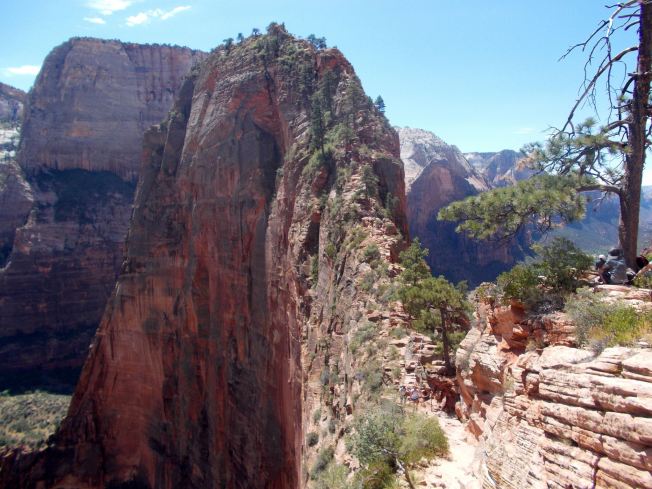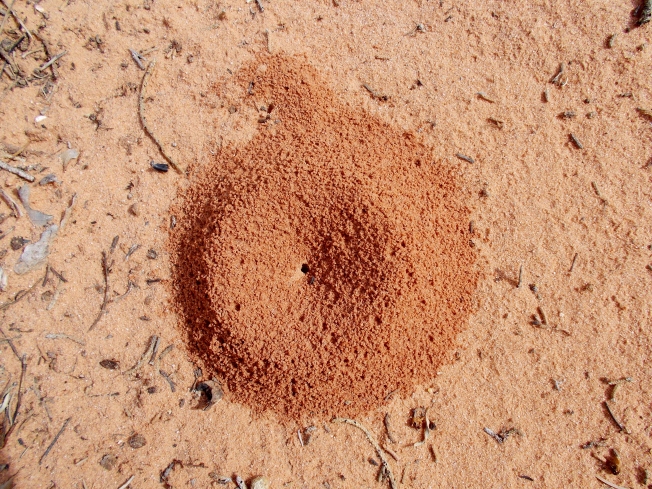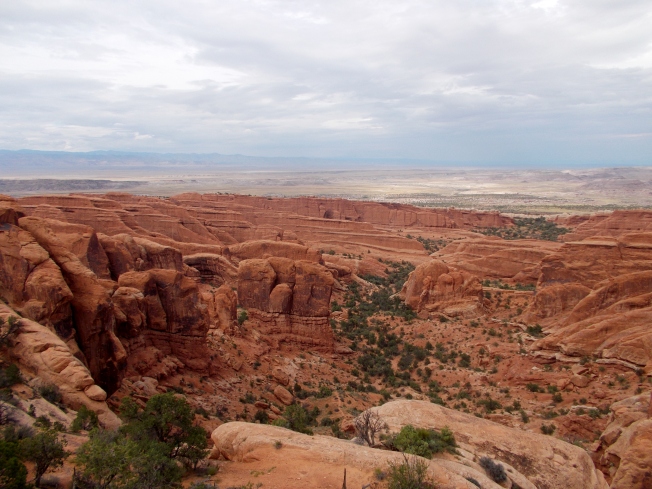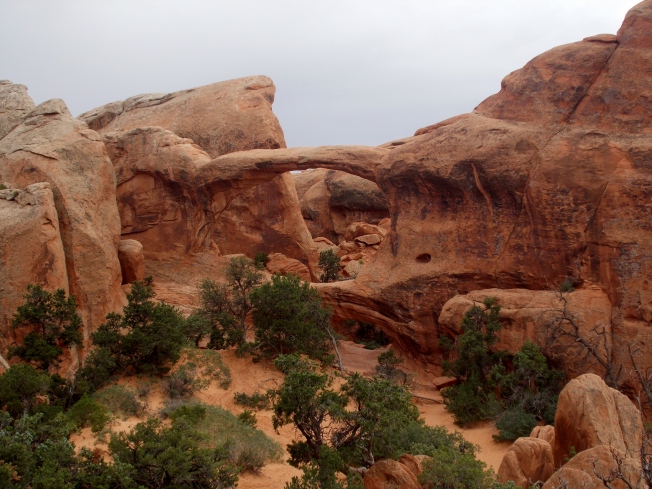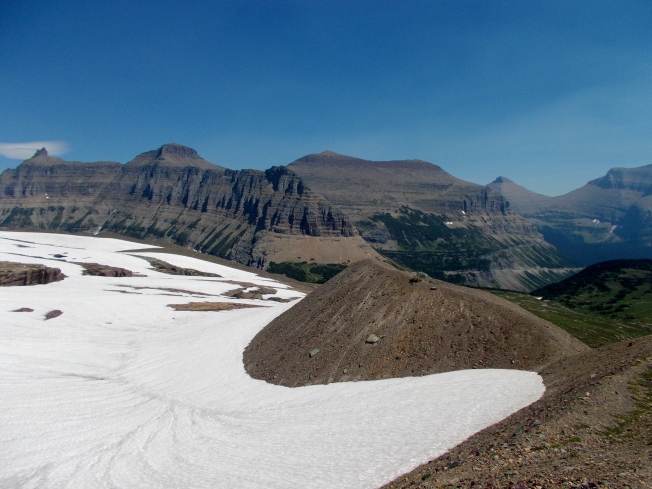My first day in Iceland had left me intrigued by the paradox of the country’s landscape, with its archaic features on a youthful base. The pessimism that I’d felt at the beginning of the trip had reduced slightly, but I was still unconvinced about the prospect of seeing anything here that would blow me away. I really believed having to remove Skaftafell National Park from my itinerary would take the spark out of the trip. Discovering that there was no accommodation left had produced the same feeling of disappointment when one realises their crush isn’t at the party; the balloons had deflated and the question ‘Is it even worth staying?’ momentarily popped up.
On the evening of my second day I was heading for Skógar, home of the famous Skógafoss, and the beginning of the extended hiking route to Landmannalaugar. I’d decided to attempt to walk half the 23km route to Pórsmörk on my third day, telling myself that I’d tag along with fellow walkers so I wasn’t alone. ‘It’ll be fine,’ I kept telling myself as I sat in the bus station reading my guide book. But the words ‘tough terrain’ and ‘bad weather’ jutted out from the page like metal barriers from a concrete road, threatening to block my progress. I wasn’t optimistic about getting through them successfully.
With 15 minutes to go before my departure I sat slumped in a chair, reluctant to get up. The couple next to me stood up to catch their bus, leaving a pamphlet on the seat behind them. I absent-mindedly cast my eyes over it, then suddenly came alive and like a poor beggar who’d just spotted a pile of gold, snatched it up excitedly. It was promoting a day tour to Skaftafell National Park. In other words, I’d be able to visit it without having to worry about finding a place to sleep for the night. I held the pamphlet in my hands like it was a precious gift that I was scared of damaging – Christmas had arrived early, but at a high price. Could I really justify spending the equivalent of £80 on one day tour, when I had the rest of my budget to think about? I tapped my foot on the floor impatiently, glancing hesitantly at the clock every 15 seconds or so. Then with five minutes to go before my bus arrived, I got up to buy the ticket. Spending so much money in one transaction had never filled me with so much relief. As I hoisted my backpack over my shoulder I felt revitalised, as if the trip was finally beginning. Something inside told me this was a decision I wouldn’t regret.
Today’s bus driver was a strawberry-blond haired man with short chubby legs and a goofy face, his childish looks only made more bizarre by the punky ring dangling from his left ear. He reminded me a little of the character ‘Wormtail’ in Harry Potter, and I decided to nickname him ‘Timmy’, laughing to myself as he waddled along the bus asking each passenger where they were from, before attempting to speak a sentence in their language.
The evening sun cast a healthy glow over the hills as our journey commenced, bringing new life to the land. I’d heard that the love interest was actually about to set off to the party, and my excitement was reflected in the radiance of the land’s complexion. A couple of hours later a giant cake of a mountain came into view on my left, its frosty icing oozing over the chocolate sponge of the land. It was a volcanic glacier, and not just any volcanic glacier, but that of Eyjafjallajökull: the sweet treat that caused so much trouble in 2010 when it exploded and sent clouds of dusty flour and hot sauce into the air, turning people everywhere crazy for ruining their European party plans. Knowing that I was seeing the sight of such controversy through my own eyes made my tummy bubble up in a frenzy, as if I too was a volcano about to erupt. The boy I wanted to see at the party had told me he was on his way.
About 20 minutes before Skógar, you’ll then see out of your window the gorgeous sight of Seljalandsfoss, a tall waterfall with wispy columns of water that seem to fall in slow motion, resembling flakes of icing sugar pouring into a mixing bowl.

As we approached Skógar I realised that I didn’t actually have a map of the village, and hoped my hostel wouldn’t be too difficult to find. But you can guarantee that you’ll have no problems finding anywhere in this tiny place. ‘Village’ was too generous a term. As I stepped off the bus and said bye to Timmy, the only sound I could hear was crashing water in the distance. The hostel and its campsite are situated about 400m from the famous waterfall, and as soon as I’d checked in I bounded over to have a look. The sight of people setting up tents and lighting stoves opposite the river Skógá made me feel warm inside, reminding me of family holidays as a child. A bed of black sand welcomed my walking boots, and my face was painted with the spray of the water dropping 62m from the top. If you climb the steps going up the hill beside the waterfall, there’s a great lookout point from halfway up. Unlike at Seljalandsfoss, the water looks so strong that you almost feel if you were to jump out with your arms open, you’d be able to grip it like a thick piece of rope and reach the ground securely.
I went back to the hostel, only to find that the three American women who’d been on my Golden Circle tour the day before were sleeping in the same dorm. Hearing them whine about their sore feet made me feel relieved I wasn’t going to have to tag along with them to Pórsmörk the next day. I went for a shower to escape them for a bit, breathing a lazy sigh of content as I turned on the tap. The water gushed out and I sprang back in surprise, overwhelmed by the strong smell of rotten eggs. For about a minute I stood in the nude awkwardly, looking around my cubicle as if that would provide some sort of answer, before realising that this smell is normal for showers in Iceland, because of the sulphur in the springs where the water comes from. After a few minutes you get used to it…
There was no need for an alarm clock the next morning, as sunlight through the window woke me. I jumped out of my bunk and got dressed eagerly, hoping I wouldn’t wake the (snoring) Americans. There was a fresh snap in the air as I headed out to see Skógafoss again. After absorbing its cool vapour I climbed the steps all the way to the top of the waterfall. Your quads will burn after but it’s worth it for the view. Horses and sheep grazed together peacefully on the hill opposite, with the blue sky pouring a faint rainbow over them. If you climb over the stile into the field where the famous hiking route to Pórsmörk begins, you’ll see Eyjafjallajökull poking above a hill. I couldn’t get over how close I was to it.


The tour bus stopped specially in Skógar to pick me up. When I saw it pull up I breathed a sigh of relief, as if I’d just seen my crush’s car, having originally feared he wasn’t going to show afterall. The bus was pretty busy and I took the middle seat on the back row. A young English couple sat next to me on the left, with the girl moaning about the lack of WiFi, saying she hoped the journey wouldn’t take much longer. As we drove past acres of lava fields, I couldn’t understand how she was more interested in looking at a screen than outside the window. On my right was a complete contrast, with two ladies from Hong Kong excitedly taking photos of pretty much everything…We stopped at one point to walk onto the lava fields. The rocks are an earthy-green colour and resemble bubbles dotted with holes – a continuous land of Mint Chocolate Aeros! It was hard to imagine waves of hot lava streaming ferociously over the land.
An hour later the bus turned off for the tourist centre of Skaftafell National Park, part of the huge Vatnajökull National Park. The love interest had got out of his car and was walking up the driveway. Whilst the girl next to me slumped back in her seat with a bored expression, I unbuckled my seat belt eagerly like a little kid arriving at the seaside thinking something might be missed by not getting off the bus first. I had four hours to myself in the park, and spent the first half it walking the approximately 2km route to Svartifoss (the Black Falls). I had a new energy in my legs, and strode effortlessly up the pebbly path, overtaking panting walkers who stared at me in envious wonder. The landscape had changed drastically from my first day touring the Golden Circle – the tidy paths were lined with green bushes, the clumpy vegetation of the area giving it more of a Mediterranean feel. Rustic signs pointed in all directions to other little nooks and crannies. Sandy deposits sat beside a calmly-flowing stream, which then seeped languidly into a waterfall. There was something very serene about the water here, as if it was in no rush to get anywhere. The landscape had softened.
Svartifoss comes into view about 600m before you reach it – the whiteness of the water acting as a lighthouse amongst the green ocean of vegetation. Once you arrive in front of the falls it’s as if you’ve descended into a gloomy Church; tall dark walls of basalt surround you, the columns hanging rigidly like pipes on a giant organ, standing to attention as the waterfall delivers its solemn sermon. It’s this bizarre structure of the rock, rather than the waterfall itself, that makes Svartifoss so popular with visitors. Sit for a while and admire the view.

I’d saved the best view, however, till last. Skaftafellsjökull is an easy 30 minute walk from the tourist centre, and as the air gets a little colder on approaching it, so too does the anticipation build. In sight comes a mouth-watering mess of melted ice-cream decorated with chocolate curls – the glacier, dusted with ash, sits comfortably between two hills before a placid lake dotted with mini icebergs. Signs warned about loose sand, but I wasn’t looking at my feet as I trod, mouth open, over the black sand, as if heading towards a pool of treasure. The solid ice in the water stood still like a collection of gargoyles, with the only noise around me being the occasional lap of water against the ‘shore’. I walked up a crumbly path and perched on a rock, feeling like a newly-inaugurated Queen on a throne surveying my kingdom down below. The Prince I’d been waiting for at the party had arrived and made his presence felt with a ‘bang’, as if someone had just pulled a partycracker inside my chest.

Finally I’d experienced the feeling I’d been waiting for – the skip of a heart beat and the lack of words. And yet what was so interesting was the fact that the view in front of me wasn’t even one that could be described as ‘beautiful’. It was too messy for that, the surrounding colours too dull. But not all boys are perfectly formed, and yet still have something about them that makes them so attractive. What the view was was simply stunning. It was the untidiness of the glacier that made it so marvellous – a true natural wonder. I smiled to myself a genuine smile that Iceland hadn’t seen yet. “This is why I’m here,” I said aloud. I laid my head back on the rock feeling completely fulfilled. Nothing was happening in front of me – I was looking at nothing but a mere canvas of idle nature – but I didn’t want to leave that spot. The spark had been lit and it felt like the party had only just begun.
Back on the bus, the English couple had thankfully moved to the front, but even their underwhelmed attitudes couldn’t have rubbed off on mine. I was smitten and nothing would change how I felt. The two ladies from Hong Kong sat on either side of me, nudging me excitedly when they spotted a huge rainbow out of the window. One of them offered me a green-tea flavoured biscuit and, upon asking where I was from began to say, “The English accent is very -” before nodding her head sharply with pursed lips and a frown to demonstrate what she was trying to say. A few seats in front of me an American guy tried to flirt with the brunette Swede sat opposite him, casually taking hold of her camera to look at her photos, and telling her about his Masters degree. After a few minutes she looked quite bored, and turned to chat to the older German man next to her who looked like he had a lot of money. American man leaned in, desperate to get involved in the conversation, before realising he’d blown it and sitting back in his seat in sulky disappointment.
Our bus stopped briefly in the small town of Vik (full name ‘Vík í Myrdal’), which is the most southerly village in Iceland with a lovely beach. The light was dimmer outside but the sky was still a fantastic blue, casting a tranquil aura over the land. Perch yourself on the pile of rocks leading out to the sea and admire the Reynisdrangar in the distance. The ‘troll rocks’ are so named from a myth that states they resemble former trolls who drowned after taking their boats out into the wild sea. The village of Vik is tiny, but if you’re planning a road trip along the south coast, it’s worth taking advantage of the hostel and staying one night, just to embrace its romantic charm.

As the bus dropped me off back at Skógar, I wished my friends from Hong Kong a pleasant trip and disembarked onto a land of sweet content. Eyjafjallajökull caught the sunset beautifully and greeted me with a warm glow. It was the perfect evening to end the perfect day. My instinct had been right – the tour had been worth every penny, even if I would have to spend the rest of the week living off cheap biscuits and raw carrotsticks. I walked up the road to catch a sight of the Westmann Islands in the distance. The state of being lovestruck was making me daydream and I didn’t even notice at first when a car pulled over to ask if I was wanting a lift somewhere. The islands lay basking in a golden haze of sun. I would head there the next day, recharged by this new spark that had given me a greater zest for the country and what it had to offer.
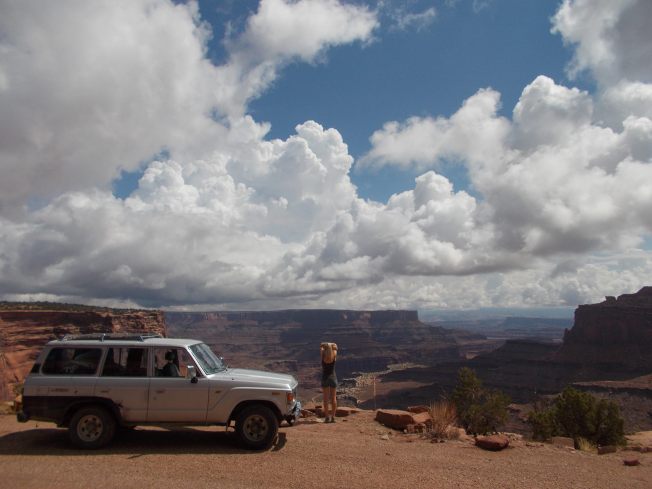



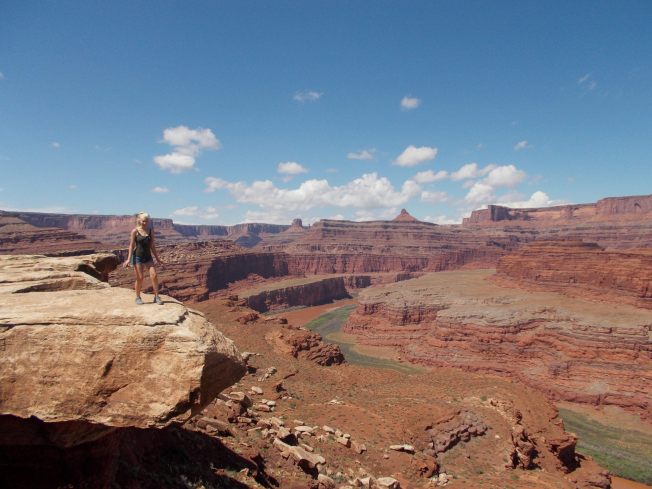









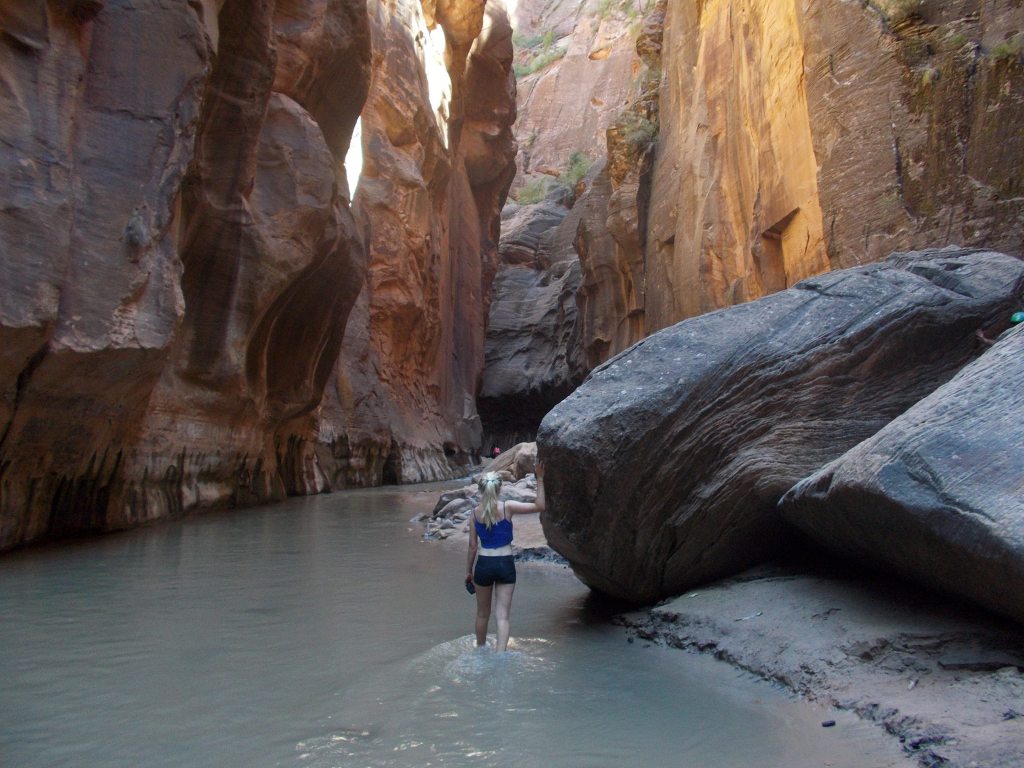 There are points when you might be waist deep in the water, so it’s advisable not to bring valuables with you on this walk. Do bear in mind however that you may be chilly after leaving the water. Nevertheless make the most of the water on your skin as the park only receives 15 cm of rainfall a year!
There are points when you might be waist deep in the water, so it’s advisable not to bring valuables with you on this walk. Do bear in mind however that you may be chilly after leaving the water. Nevertheless make the most of the water on your skin as the park only receives 15 cm of rainfall a year!

